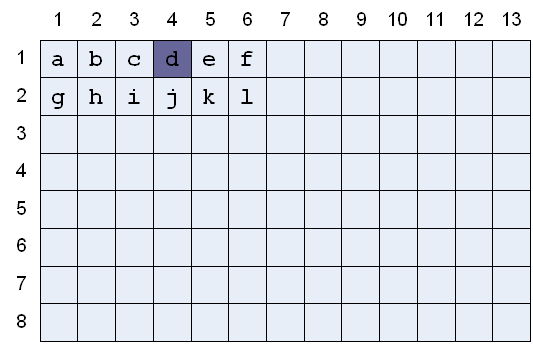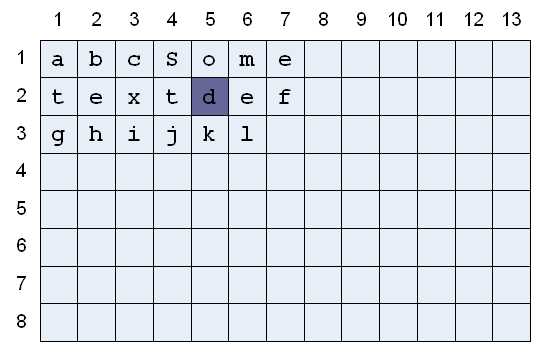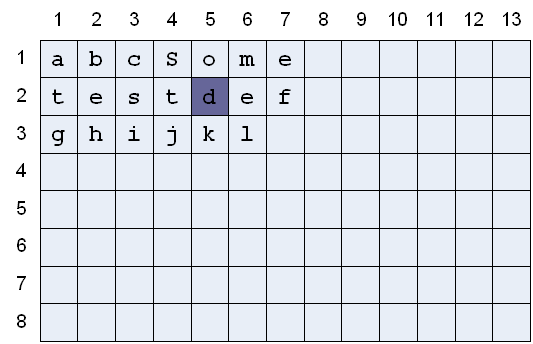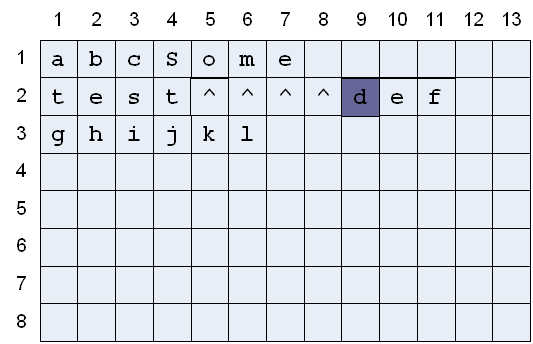You can use the following ASCII control characters in strings to be inserted; all other ASCII control characters are ignored.
Escape Sequence |
Purpose |
\t (or \^I) |
Tab. (Inserts 1-8 spaces, to bring the text cursor to the next tab stop. Tab stops are every 8 columns.) |
\b (or \^H) |
Backspace (destructive). |
\n (or \^J) |
Newline (carriage return and linefeed). |
A newline character (\n) moves the text cursor to column 1 of the next line, and the inserted text continues at that point. For example, if the textual region contains the following text, and the cursor is at column 4 line 1.

and the following text is inserted:
add to ABC
insert "Some\ntext"
the textual region will display the following:

A backspace character (\b) deletes the character to the immediate left of the text cursor. For example, if the textual region contains the text in the above illustration, when the text cursor is at column 5, line 2, and the following text is inserted:
add to ABC
insert "\b\bst
the textual region will display the following:

If you insert a backspace when the text cursor is at column 1, line 1, nothing will be inserted, and the text cursor will not move.
In textual regions, tab stops are every 8 columns; that is, column 9, 17, 25, 33, etc. A tab character (\t) inserts 1 to 8 spaces, to bring the text cursor to the next tab stop. For example, if the textual region contains the text in the above illustration (with the text cursor still at column 5, line 2) and the following text is inserted:
add to ABC
insert "\t"
the textual region will display the following:
